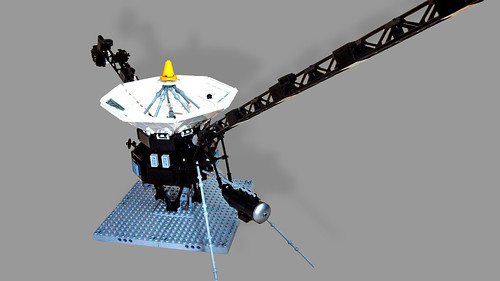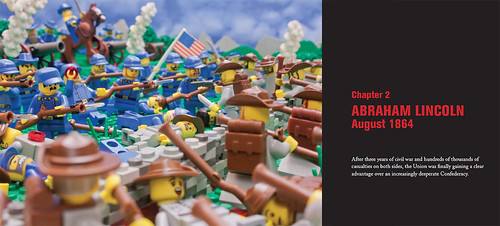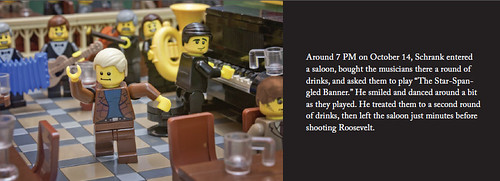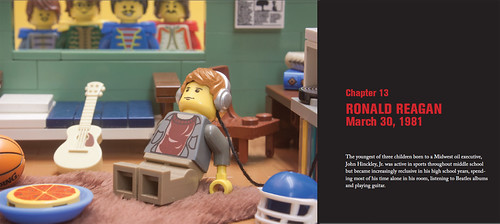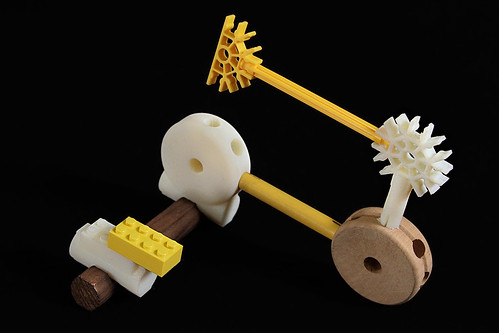Please note that I'm posting this same review across all my blogs, but I'm appending some blog-specific information at the end of each one.

Last year I reviewed a couple of books that provided instructions to build various modern guns out of LEGO. I commented that, at least to my untrained eye, these all kind of looked the same after a bit. I suggested that if someone wanted to do another book along these lines, they should vary it up a bit, perhaps doing more historical weapons, or else weapons from Star Wars or other sci-fi themes. It seems that someone was listening, or at least had the same sort of idea. Jake Mackay has come out with a new book for your consideration, called Badass Bricks: Thirty-Five Weapons of Mass Construction. This book takes a broader view of LEGO-built weapons. Mackay's subject matter is drawn from across history, from a Roman chariot to a nuclear sub. The scale is also varied, from lifesize weapons you can hold in your hand, to a few minifig-scale models, to even a little microscale.

The book is well put together, with clear, full-color instructions. Each model has a very brief description of its historical context and in the back there is a parts list for each. The models themselves range from simple to intermediate. I really like the idea of the book, but in my opinion some of the models come out looking kind of blocky. Also, and I have to state for the record that I have not built all of these, so my intuition may be faulty, but several of the life-size models seem a little fragile. It seems to me that if you build a life-size sword, you want to be able to swing it around a bit without it falling into a million pieces, so I see that as a negative. By far the best model is a fig-scale Humvee, seen below (forgive the image quality, I took a screenshot of the Google Books preview and blew it up a little). There are also some castle-era siege weapons at roughly minifig scale that are pretty nice.

A couple of curious facts: It looks like in some parts of the world this book is being marketed as "Badass Bricks: Forty Weapons of Mass Construction". I wonder why five models seem to have been removed from the US version. From the alternate cover image and the descriptive blurbs for the 40 version, it seems that the missing models are mostly modern guns. I wonder if the publishers felt there was too much overlap with Jack Streat's LEGO Heavy Weapons book. On Mackay's MOCpage (it's older material, with no recent updates), he notes that he admires Streat, and some of his designs on that page were inspired by Streat's work. It's only my speculation, but maybe there was concern that the missing five models came too close to other work. Another confusing note is that the bottom of every other page has the caption "Battle Bricks". I wonder if this was the working title of the book, and at the last moment the publishers changed it to "Badass Bricks".
In sum, this book is okay, but not great. This is a nice addition to my LEGO library, but there are other things out this year that I would rank higher. If you are really into making LEGO-built weapons, you might get this, but on the other hand you could probably just peruse Flickr for ideas. The target audience is probably younger teens who are intermediate builders.
Blog-specific content - Mackay notes that the German V-2 Rocket was the forerunner of modern rockets and also the first to take photos of the earth from outside the atmosphere.
